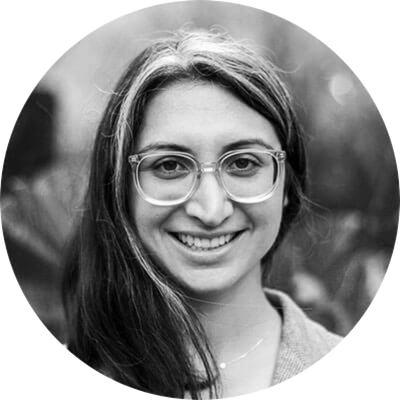Wisdom, as Odysseus learned island-hopping his way home, is cultivated. And cultivating wisdom requires perseverance—the journey’s end remains a mystery until it isn’t. Scientific odysseys are much the same, minus the Cyclops and Calypso.
The dozens of scientists gathered at the Hakai Beach Institute, on Calvert Island just off British Columbia’s Central Coast, battle weather more than they do killer giants and immortal nymphs, and it’s colder in Kwakshua Channel than in the Aegean Sea. But right now, in Homeric style, they’re feasting together.
After a day spent in the field, studying all aspects of Calvert Island and its surroundings, close to forty people with an alphabet soup of credentials have plunked down plates around eight tables, one long enough to seat twenty. The dress code is classic West Coast, with everyone ready for a hiking trail or boating excursion (although in true Canadian fashion, shoes are left in the foyer). The smell of roasted meat pervades the room, as voices bounce off the vaulted ceiling in syncopated polyrhythms; the scrape of knives and forks against plates adds more percussion.
“This is probably the loudest conversation I’ve heard,” says archaeologist Jim Stafford. A few seats down, geographer Luba Reshitnyk asks another archaeologist, Jenny Cohen, what she’s doing tomorrow.
“We’re supposed to go back to EjTa15, but I don’t know if we’ll actually do that,” Cohen says. Reshitnyk nods (everyone knows the lingo).
Eric Peterson leans against a railing, watching. Each evening, he waits before sliding into a different seat and chatting with different scientists. He and his wife, Christina Munck, founded Hakai in 2009. The institute reflects their shared interest in coastal ecosystems, and for him a return home of sorts. Born in Port Alberni on Vancouver Island, the neuroscientist-turned-entrepreneur sold his medical imaging company, Mitra, in 2001, and the couple launched Tula, a self-funded family foundation focused on health care and the environment, of which the institute is a part.
To land a seat at their table is deceptively rigorous, if informal. Peterson and Munck don’t consider themselves philanthropists, but rather curators of science: through word of mouth, they fit together projects and researchers that they find interesting and that, perhaps, have the potential to answer big questions.
Duncan McLaren—who sits at the long table, freshly showered though slightly dishevelled after weeks of fieldwork—is trying to answer one such question. Each field season for the past three years, he and his crew have dug and sifted for artifacts that reveal the Central Coast’s buried past, and that may one day help us better understand the peopling of the Americas. (His ancient landscapes project is in keeping with Peterson and Munck’s own realization—courtesy of a conversation with Stafford several years ago—that Hakai has been a gathering place for millennia.)
At another table, Kira Hoffman, a biologist, talks to Peterson and Maartje Korver, a hydrology graduate student from Amsterdam. Between bites of roasted lamb, Hoffman describes her day in the bog forest, and Korver is intrigued that biologists can profile soil samples using nothing more than a shovel and their hands. Their discussion veers into the area’s geology, and they laugh when Peterson recounts how a visiting geologist once shot down all his theories about Calvert Island’s history. They eventually land on the subject of groundwater.
Elsewhere, Bill Floyd, also a hydrologist and Korver’s supervisor, huddles over his smart phone with archaeologist Daryl Fedje. Gazing at a chart of Kwakshua Channel, they discuss geological features.
“There’s an alluvial form here,” Fedje says, pointing to the phone. Look for sharp rocks, he continues, which are an indication of human activity (people used hot stones to warm cool water, which resulted in the rocks breaking into shards). He traces tombolos and moraines on the table with his finger. “That might be an area that wasn’t affected by glaciation,” he says. “But if you find a charcoal layer, that’s almost certainly cultural.”
Floyd mentions lidar, a remote-sensing technology: “It picks up all that, and I have some ideas of how I want to use it.”
In the way humans have networked since time immemorial, these disparate conversations sow ideas, unknowable at the moment but primed for germinating later. What could a complete, interdisciplinary environmental physical of Calvert Island and its surroundings—a 161-square-kilometre island within a 1,200-square-kilometre marine conservation area—give the world? Who knows? Governments tend to search for quick answers to economic questions: Can we build a pipeline here? Yet true ecological research is a quest for the long view—the past, present, and future. As everyone around these tables knows, the natural world does not exist in a petri dish or on an artificial timeline; it’s buffeted by identifiable actors—when sea otters return, kelp forests reappear—and countless invisible agents that scientists painstakingly unmask. Or try to. Ultimately, Hakai scientists could offer an ecological road map, a treatise on how humans and the natural world are not necessarily adversaries.
Archaeologists, biologists, ecologists, geologists, hydrologists, and fill-in-the-blank-ologists come to Calvert Island to navigate an ocean of intellect, a sea of problems. They talk science, across disciplines, without restraint. They are all experts, and they are all novices—and none of them knows when the journey will end.
This appeared in the October 2014 issue.






